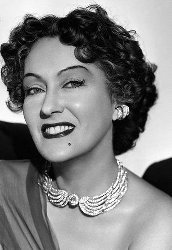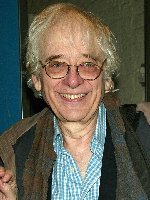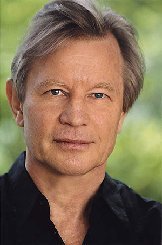Nevada (/nɪˈvædəˌ -vɑː-/ ⓘ nih-VAD-ə, -VAH-, Spanish: [neˈβaða]) is a state in the Western region of the United States. It borders Oregon to the northwest, Idaho to the northeast, California to the west, Arizona to the southeast, and Utah to the east. Nevada is the 7th-most extensive, the 32nd-most populous, and the 9th-least densely populated of the U.S. states. Nearly three-quarters of Nevada's people live in Clark County, which contains the Las Vegas–Paradise metropolitan area, including three of the state's four largest incorporated cities. Nevada's capital is Carson City. Las Vegas is the largest city in the state....
Reno..........
Nevada is officially known as the "Silver State" because of the importance of silver to its history and economy. It is also known as the "Battle Born State" because it achieved statehood during the Civil War (the words "Battle Born" also appear on its state flag); due to the presidency of Abraham Lincoln, the Union benefited immensely from the support of newly awarded statehood by the infusion of the monetary support of nearly $400 million in silver ore generated at the time by the Comstock Lode. It is also known as the "Sagebrush State", for the native plant of the same name; and as the "Sage-hen State". The state's name means "snowy" in Spanish, referring to Nevada's small overlap with the Sierra Nevada mountain range; however, the rest of Nevada is largely desert and semi-arid, much of it within the Great Basin. Areas south of the Great Basin are within the Mojave Desert, while Lake Tahoe and the Sierra Nevada lie on the western edge. About 86% of the state's land is managed by various jurisdictions of the U.S. federal government, both civilian and military.
American Indians of the Paiute, Shoshone, and Washoe tribes inhabit what is now Nevada. The first Europeans to explore the region were Spanish. They called the region Nevada (snowy) because of the snow which covered the mountains in winter, similar to the Sierra Nevada in Spain. The area formed from mostly Alta California and part of Nuevo México's territory within the Viceroyalty of New Spain, which gained independence as Mexico in 1821. The United States annexed the area in 1848 after its victory in the Mexican–American War, and it was incorporated as part of the New Mexico and Utah Territory in 1850. The discovery of silver at the Comstock Lode in 1859 led to a population boom that became an impetus to the creation of Nevada Territory out of western Utah Territory in 1861. Nevada became the 36th state on October 31, 1864, as the second of two states added to the Union during the Civil War (the first being West Virginia).
Nevada is known for its libertarian laws. In 1940, with a population of just over 110,000 people, Nevada was by far the least-populated state, with less than half the population of the next least-populous state, Wyoming. However, legalized gambling and lenient marriage and divorce laws transformed Nevada into a major tourist destination in the 20th century. Nevada is the only U.S. state where prostitution is legal, though it is illegal in its most populated regions – Clark County (Las Vegas), Washoe County (Reno) and Carson City (which, as an independent city, is not within the boundaries of any county). The tourism industry remains Nevada's largest employer, with mining continuing as a substantial sector of the economy: Nevada is the fourth-largest producer of gold in the world. Nevada is the driest state, and over time, and influenced by climate change, droughts in Nevada have been increasing in frequency and severity, putting a further strain on Nevada's water security.
Etymology
The name "Nevada" comes from the Spanish adjective nevada ([neˈβaða]), meaning "snow-covered" or "snowy".[18] The state takes its name from the Nevada Territory, which in turn was named for the Sierra Nevada.
Indigenous history
Before the arrival of Europeans, the earliest inhabitants were Indigenous tribes including the Goshute, Southern Paiute, Mohave, and Wašišiw (Washoe people).
Gambling and labor
Unregulated gambling was commonplace in the early Nevada mining towns but was outlawed in 1909 as part of a nationwide anti-gambling crusade. Because of subsequent declines in mining output and the decline of the agricultural sector during the Great Depression, Nevada again legalized gambling on March 19, 1931, with approval from the legislature. Governor Fred B. Balzar's signature enacted the most liberal divorce laws in the country and open gambling. The reforms came just eight days after the federal government presented the $49 million construction contract for Boulder Dam (now Hoover Dam).
Nevada and California have by far the longest diagonal line (in respect to the cardinal directions) as a state boundary at just over 400 miles (640 km). This line begins in Lake Tahoe nearly 4 miles offshore (in the direction of the boundary), and continues to the Colorado River where the Nevada, California, and Arizona boundaries merge 12 miles southwest of the Laughlin Bridge.
- SERVES
- 8
- COOK TIME
- 50 Min
Half dip, half side dish, our Cracker Onion Pie is a favorite no matter how you serve it! With a crispy cracker crust, and a cheesy onion filling, you can bet that this pie won't be left untouched!
- 1 1/2 cup finely crushed saltine crackers
- 3/4 cup butter, melted, divided
- 2 large onions, thinly sliced (see Note)
- 4 eggs
- 1 cup milk
- 1 teaspoon salt
- 1/2 teaspoon black pepper
- 1/2 cup (2-ounces) shredded sharp cheddar cheese
- Preheat oven to 350º. Coat a 9-inch pie plate with cooking spray.
- In a medium bowl, combine cracker crumbs and 1/2 cup melted butter. Press into bottom and up sides of pie plate, forming a crust. Refrigerate until ready to fill.
- In a large skillet over medium heat, saute onions in remaining 1/4 cup butter 10 to 12 minutes or until tender. Carefully pour onion mixture into crust.
- In a medium bowl, whisk eggs, milk, salt, and pepper until well beaten; slowly pour over onions. Sprinkle cheese evenly over top.
- Bake 40 to 45 minutes or until golden and center is set. Let stand 5 minutes, then cut into wedges and serve.
Famous Joes:
- American football player and coach – Joe Montana
- Politician – Jo Ann Emerson
- Comedian, musician, and actor – Joe Pesci
- Musician, singer, dancer -Josephine Baker
- Theatrical producer, entrepreneur, film producer – Joseph Gordon
- American football player – Joe Namath
- Opera singer – Dame Josephine Barstow
- Formula one endurance driver – Jo Gartner
- Politician, soldier – Joseph Stalin
- Songwriter, musician, singer – Joey Ramone
- Journalist – Jo Coburn
- Baseball player – Shoeless Joe Jackson
- Olympic medalist, swimmer – Josephine McKim
- American football player – Joe Green
- Actress – Jodie Foster
- Musician – Joe Jonas
- Businesswoman, politician – Jo Ann Davis
- Baseball player, actor – Joe DiMaggio
- Author – Josephine Cox
- Musician – Joe Cocker
- Boxer – Joe Frazier
- Athlete, sprinter – Joanne Cuddihy
- Baseball player – Joe Mauer
- Journalist, author – Josephine Lawrence
- Press Secretary – Jody Powell
- Musician – Joe Walsh
HOW TO OBSERVE
2. For the day, change your name to a name of your choice.
3. Everyone changes their name to a version of “Joe” or “Jo” of your choice.






.jpg)







